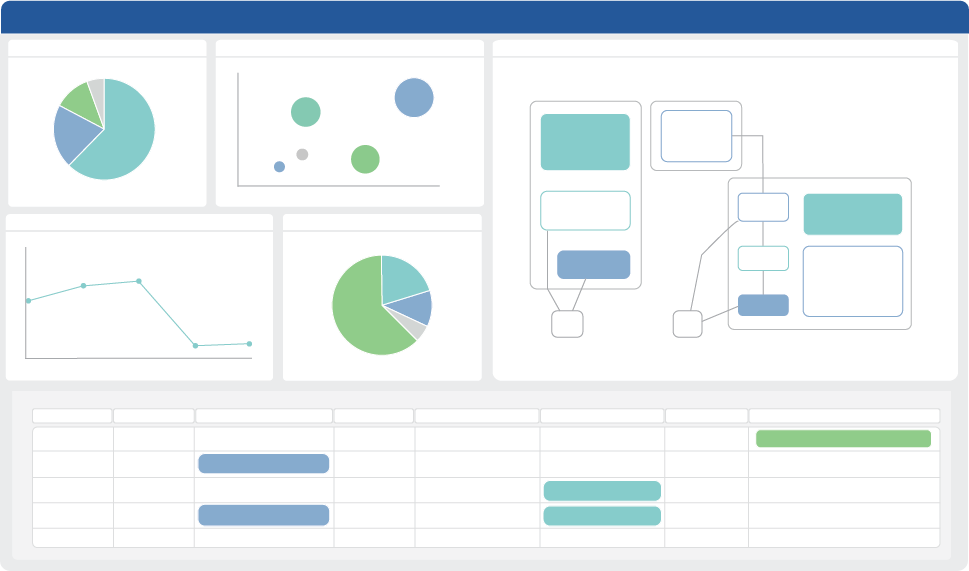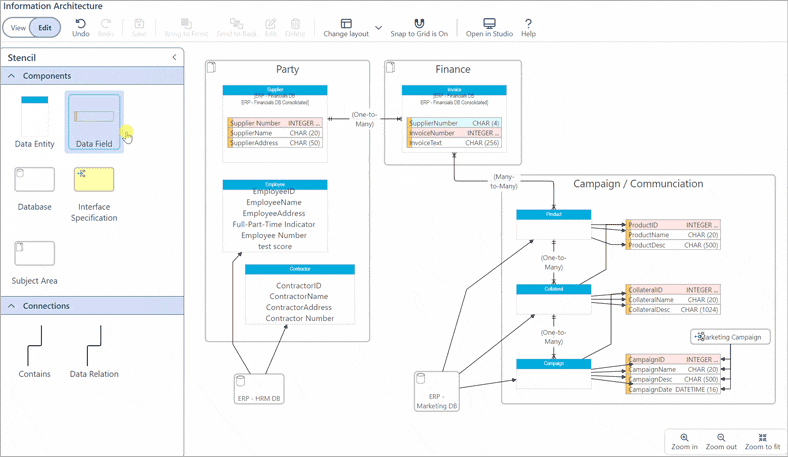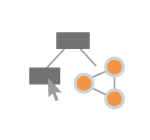Information Architecture & Data Modeling

Information Architecture Diagrams & Templates
Collaborate with architects, data owners and stakeholders in real-time and across the business to ensure information stays accurate and relevant
- Set up a centralized view of the company’s information assets and use data integrations to automate data maintenance (SharePoint, ServiceNow, CMDBs or via our REST API)
- Map out information assets data flows, and data stores. For instance, build Entity Relationship Diagrams to show data entities and their relationships
- Build or edit diagrams with a drag-and-drop stencil interface.
- Grant permissions to allow colleagues to view or edit diagrams and their connected datasets. Empower your teams to work efficiently without compromising sensitive data.
- Motivate decision-makers with clear presentations and dashboards showing Processes, Metrics and Roadmaps


Model Data Flows Including Processes, Information & Technology
Interactive graph database views of connected applications, databases and infrastructure and processes can help to visually identify dependencies
- Use UML models, Business Object Models, Entity Relationship Diagrams etc.
- Set up automated calculations and analytics to track project costs, technical metrics (Performance, Reliability etc.)
Frameworks for Architecture Management
Information architecture frameworks must be appropriate to manage logical and physical architecture. Maintain governance by setting naming conventions and other standards using frameworks, permissions and data dictionaries to guide inputs and updates. In ABACUS, users can select from standard frameworks or tailor enterprise-specific frameworks themselves.
Which framework is best for you?




Use ABACUS for Modeling:
- Corporate data models and database description language / design (DDL)
- Entity relationship diagrams and process modeling
- ABACUS also offers truly cloud-based enterprise modeling and the ability to future-proof enterprise models via a flexible graph-database back-end.

